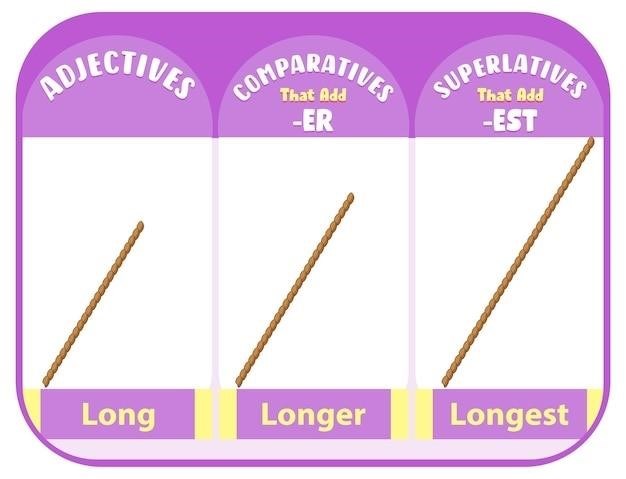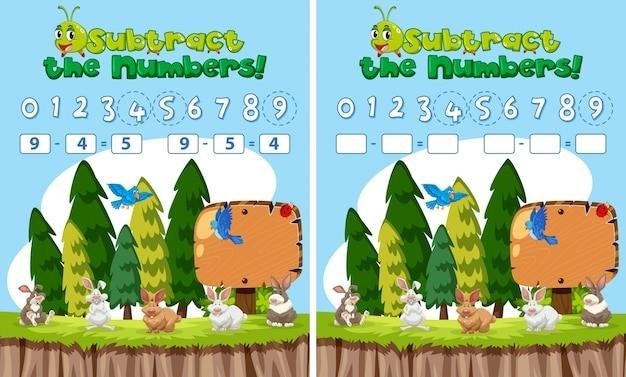Paul’s Third Missionary Journey
Paul’s third missionary journey, detailed in Acts 18⁚23-21⁚16, spanned approximately four years, from 53 to 57 AD. This journey, unlike his previous ventures, saw Paul traveling without Silas, focusing primarily on strengthening existing churches in Asia Minor, particularly Ephesus, where he spent a significant portion of his time.
Overview
Paul’s third missionary journey, documented in the book of Acts, stands as a pivotal chapter in the early history of Christianity. It marked a period of intense evangelism and church building for the apostle Paul, characterized by a deep commitment to strengthening existing Christian communities and planting new ones. This journey, unlike his previous ventures, saw Paul traveling without Silas, with his primary focus on Asia Minor, particularly Ephesus, where he spent a significant portion of his time. The journey’s significance lies not only in its geographical scope but also in its impact on the development of the early church. Paul’s teachings and ministry during this time, particularly in Ephesus, played a crucial role in shaping the theological landscape of the nascent Christian movement, influencing the understanding of Christ’s teachings and the nature of faith.
The journey’s route took Paul through various regions, including Galatia, Phrygia, and Macedonia, where he encountered diverse populations and faced unique challenges. It was during this journey that Paul encountered the growing influence of various philosophical and religious ideas, which he actively engaged with, presenting the gospel in a way that resonated with his audience. This led to lively debates and discussions, ultimately contributing to the spread of the Christian message beyond its initial Jewish context. The journey also witnessed the rise of new challenges and obstacles, including opposition from Jewish authorities and the emergence of false teachings within the Christian community. Paul’s response to these challenges, documented in his letters and in the book of Acts, provides invaluable insights into the complexities of early Christianity and the struggles faced by its pioneers.
The Journey’s Purpose
Paul’s third missionary journey was not merely a geographical expedition but a strategic undertaking driven by a profound spiritual purpose. Unlike his earlier journeys, which focused on establishing new Christian communities, this journey centered on strengthening existing churches and addressing emerging challenges. The journey was a response to the rapid growth of Christianity and the need to provide guidance and support to newly formed congregations. Paul aimed to solidify the faith of young Christians who had embraced the gospel, ensuring their understanding of core teachings and their ability to withstand emerging heresies.
Paul’s primary objective was to revisit and revitalize churches he had previously established, particularly those in Galatia and Phrygia, where he had encountered significant opposition from Jewish authorities. His goal was to encourage and strengthen these communities, equipping them to face future challenges and maintain their commitment to the gospel. He sought to build upon the foundations laid during his previous travels, fostering a deeper understanding of Christ’s teachings and promoting unity within the early church. Furthermore, Paul’s journey was driven by a desire to address the growing influence of false teachers who were attempting to undermine the core principles of Christian faith. He sought to expose these heresies and provide sound theological instruction, ensuring that the Christian message remained pure and unadulterated.
The Journey’s Route
Paul’s third missionary journey, a testament to his unwavering dedication to spreading the gospel, took him across diverse landscapes and bustling cities, traversing vast distances both by land and sea. Beginning in Antioch, Syria, Paul embarked on a journey that would ultimately lead him to Ephesus, a pivotal city in his ministry. From Antioch, he traveled through the regions of Galatia and Phrygia, strengthening the disciples and churches he had established during his previous ventures. His route then led him towards Ephesus, a city of immense cultural and commercial significance, where he spent a considerable portion of his time.
After his extensive ministry in Ephesus, Paul continued his journey, venturing through Macedonia and Greece, where he reconnected with existing Christian communities and established new ones. He then traveled to Philippi, Thessalonica, and Troas, cities that held a special place in his heart as they were among the first to embrace the gospel. From Troas, Paul sailed to Miletus, where he addressed the elders of the Ephesian church, offering words of encouragement and guidance. His journey then took him to Cos, Rhodes, Patara, Tyre, and Ptolemais, each stop serving as a testament to the vast reach of his ministry. Finally, he reached Caesarea Maritima, a bustling port city on the Mediterranean coast, where he encountered opposition from Jewish authorities, marking a significant turning point in his journey.
Key Cities and Events
Paul’s third missionary journey was marked by key cities and events that shaped the course of early Christianity. Ephesus, a bustling port city on the Aegean coast, became a focal point of Paul’s ministry, where he spent a significant three years. During this time, he established a vibrant church, challenged the practices of local idolaters, and faced opposition from those who opposed his teachings.
In Corinth, Paul encountered a community grappling with social and moral issues, addressing them through his teachings and letters. He engaged in debates with philosophers in Athens, seeking to bridge the gap between faith and reason. Paul’s visit to Philippi, a city known for its Roman influence, saw him experience persecution and imprisonment, showcasing the challenges faced by early Christians. In Jerusalem, Paul’s return triggered a confrontation with Jewish authorities, leading to his arrest and subsequent journey to Rome.
These key cities and events, each marked by its own unique challenges and triumphs, provide a glimpse into the dynamic and transformative nature of Paul’s ministry, where he faced opposition, built communities, and deepened the foundations of Christianity.

Timeframe and Duration
Paul’s third missionary journey, a pivotal chapter in the spread of Christianity, spanned a significant period, extending from approximately 53 to 57 AD. This timeframe encompasses a duration of roughly four years, a testament to the intensity and dedication of Paul’s mission to establish and strengthen Christian communities throughout the Roman Empire.
The journey’s duration allows for a deeper understanding of Paul’s commitment to his mission. It reflects not only his unwavering faith but also his strategic approach to evangelism, characterized by extended periods of ministry in key cities, allowing him to build relationships, establish churches, and address the unique challenges faced by each community. The journey’s timeframe also highlights the significant impact Paul had on the early Christian movement, as his teachings and actions left a lasting mark on the nascent faith.
This timeframe provides a context for understanding the events and challenges that shaped Paul’s ministry, revealing the intricate tapestry of his travels, the depth of his commitment, and the impact he made on the burgeoning Christian movement.
Paul’s Ministry in Ephesus
Ephesus, a bustling port city in Asia Minor, became the focal point of Paul’s third missionary journey, where he spent a substantial three years, significantly longer than in any other city during his travels. This prolonged stay reflected the strategic importance of Ephesus as a vital hub for trade and culture, making it a prime location for Paul to reach a diverse population.
Paul’s ministry in Ephesus was marked by both great success and significant challenges. He preached boldly in the synagogue, engaging in debates with Jewish leaders and attracting a growing number of converts. His ministry extended beyond the synagogue walls, reaching out to the broader community and captivating the hearts of many. He also faced opposition from those who opposed his message, leading to confrontations and even attempts to disrupt his teachings.
Ephesus became a center of Christian activity, with a flourishing church established under Paul’s guidance. His ministry in the city witnessed a remarkable transformation, bringing the gospel to a new audience and laying the foundation for the future growth of Christianity in Asia Minor. His legacy in Ephesus continues to inspire and resonate through the centuries, serving as a powerful testament to the transformative power of his message.
Letters Written During the Journey
Paul’s third missionary journey was a period of intense activity, marked by both spiritual growth and practical challenges. During this time, he penned several letters that offer valuable insights into his ministry, the challenges he faced, and the burgeoning Christian communities he nurtured. These letters, penned with a passion for the gospel and a deep concern for the believers he served, became foundational texts for the early Christian church.
Among the notable letters written during this journey are 1 Corinthians, 2 Corinthians, and Romans. 1 Corinthians addressed issues of division and immorality within the Corinthian church, offering guidance on matters of faith, conduct, and worship. 2 Corinthians, written in response to criticism and opposition, reaffirms Paul’s authority and defends his ministry while also offering words of encouragement and reconciliation. Romans, a masterpiece of theological reasoning, explores the nature of salvation, the relationship between Jews and Gentiles, and the universality of God’s grace.
These letters, written during a pivotal period in Paul’s ministry, provide a window into the struggles, triumphs, and theological reflections of a man deeply committed to spreading the gospel. They stand as enduring testaments to the transformative power of Paul’s message and continue to inspire and guide believers across generations.
Impact of the Journey
Paul’s third missionary journey, a period of intense ministry and spiritual growth, left an indelible mark on the early Christian church. His tireless efforts to strengthen existing churches and establish new ones played a crucial role in spreading the gospel throughout the Roman Empire. The journey, marked by both triumphs and challenges, significantly impacted the development and expansion of Christianity.
His ministry in Ephesus, a major commercial hub, proved particularly influential. His bold proclamation of the gospel and the miraculous signs that accompanied his ministry attracted many converts, significantly expanding the Christian community in the region. This growth, however, also led to opposition from pagan priests and artisans who felt threatened by Christianity’s rising influence. Paul’s courageous stand against these forces strengthened the resolve of believers and solidified the church’s presence in the city.
The letters written during this journey, including 1 Corinthians, 2 Corinthians, and Romans, became foundational texts for the early church, shaping its theological understanding and providing guidance on matters of faith, conduct, and worship. These writings continue to inspire and guide believers across generations, reflecting the enduring impact of Paul’s ministry and his profound commitment to the gospel.
Challenges and Obstacles
Paul’s third missionary journey, while marked by remarkable growth and outreach, was not without its share of challenges and obstacles. His unwavering commitment to the gospel often brought him into conflict with both Jewish and pagan authorities, who saw his message as a threat to their established religious and social order. The tension between Paul’s unwavering faith and the resistance he encountered highlights the difficult landscape of early Christianity.
In Ephesus, Paul faced opposition from the silversmiths, who saw the rise of Christianity as a threat to their lucrative trade in idols. The city’s pagan priests, threatened by the growing number of converts to Christianity, also actively sought to suppress Paul’s ministry. These challenges tested Paul’s resolve and required him to exercise great wisdom and courage in navigating a complex social and religious landscape.
Despite these challenges, Paul’s unwavering commitment to the gospel and his reliance on God’s grace enabled him to overcome these obstacles and continue his ministry. His journey serves as a powerful testament to the resilience of faith and the unwavering pursuit of truth even in the face of adversity. It also underscores the importance of standing firm in one’s convictions, even when faced with opposition and resistance.
Paul’s Return to Jerusalem
After his extensive ministry in Ephesus and other regions, Paul’s third missionary journey culminated in his return to Jerusalem. This journey, however, marked a turning point in his life, as it led to his arrest and subsequent imprisonment. Paul’s decision to return to Jerusalem was motivated by a desire to deliver a collection he had gathered for the poor Christians in Judea. He was accompanied by a group of believers, including Luke, who documented this significant period in Paul’s life.
Upon arriving in Jerusalem, Paul was immediately met with suspicion and hostility from certain Jewish leaders, who accused him of undermining the Jewish faith. The accusations stemmed from his outreach to Gentiles and his emphasis on the universality of God’s grace. His arrest and subsequent trial in Jerusalem marked the beginning of a period of great hardship and uncertainty for Paul, as he faced imprisonment and opposition from both Jewish and Roman authorities.
This dramatic turn of events, however, did not deter Paul’s commitment to spreading the gospel. Despite his imprisonment, he continued to preach and teach, sharing the message of salvation with those who came to him. His arrest and subsequent trials, though challenging, became a catalyst for Paul’s ministry to expand beyond the confines of Jerusalem, reaching a wider audience and shaping the trajectory of early Christianity.
The Journey’s Significance
Paul’s third missionary journey holds immense significance in the annals of early Christianity, marking a pivotal phase in the spread of the gospel. The journey represents a culmination of Paul’s tireless efforts to establish and strengthen churches throughout the Roman Empire. His focus on Ephesus, one of the most prominent cities in Asia Minor, highlights his strategic approach to reaching diverse populations and establishing a strong Christian presence in key urban centers.
The journey also underscores the growing tension between Paul’s message of universal salvation and the traditional Jewish beliefs of his time. The accusations leveled against him in Jerusalem demonstrate the challenges he faced in reconciling his teachings with the established religious norms of his day. This tension eventually led to his arrest and imprisonment, highlighting the risks and sacrifices inherent in spreading the gospel in a hostile environment.

Despite the difficulties he encountered, Paul’s third missionary journey proved to be a transformative experience. It solidified his reputation as a leading apostle and contributed significantly to the expansion of the Christian faith. The journey’s impact transcended the immediate context, paving the way for the future growth and development of Christianity in the Roman world.
Paul’s Legacy
Paul’s third missionary journey, while marking a critical juncture in his ministry, served as a stepping stone to a legacy that continues to resonate through the centuries. His unwavering commitment to spreading the Gospel, despite numerous challenges and hardships, left an indelible mark on the development of early Christianity. His writings, particularly the epistles penned during this journey, became fundamental texts for understanding Christian theology and practice, shaping theological discourse and influencing generations of believers.
The journey also solidified Paul’s position as a leading apostle, his tireless efforts to strengthen existing churches and establish new ones forging a path for the future of Christianity. His commitment to reaching diverse populations, particularly those outside the Jewish community, significantly expanded the reach of the Christian message, contributing to its global spread. While his journeys were often fraught with danger and opposition, Paul’s unwavering faith and dedication served as an inspiration to countless individuals, demonstrating the power of conviction and the transformative potential of belief.
Paul’s legacy extends far beyond the specific events of his third missionary journey. His teachings continue to be studied and debated, his writings remain a source of spiritual guidance and theological reflection, and his life serves as a testament to the enduring power of faith and the transformative nature of the Christian message.



























